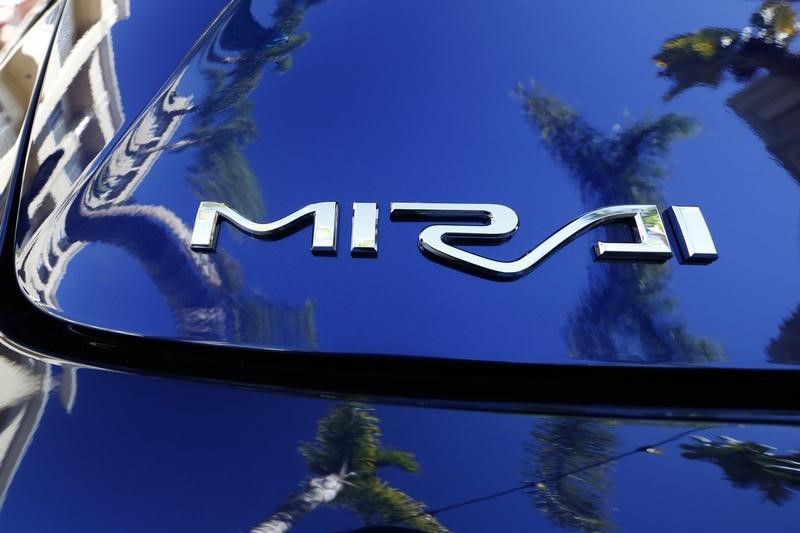Temu, Vipshop, JD.com, eBay, Amazon and Alibaba.com app icon on screen Robert Way
Recently, PDD Holdings (NASDAQ:PDD) stock got some unwanted attention when the research firm Grizzly Research wrote a short report on it. Grizzly’s report accused PDD of a host of misdeeds, including:
-
Using “black box” accounting (i.e. deliberately opaque and complex financial statements).
-
Employing forced labor.
-
Spying on Americans.
-
Losing $30 for every sale on Temu in the United States!
It was quite the laundry list of misdeeds, and it stands in stark contrast to PDD’s reputation among other analysts. Currently, PDD enjoys strong buy ratings from Wall Street and Seeking Alpha Quant alike. It has risen approximately 200% from its 2022 lows. Three of its last four earnings releases beat expectations, the most recent one by a wide margin. And the growth, of course, is off the charts. In the trailing 12 month period, PDD grew its revenue by 59% and its earnings by 117%. A strong showing on growth by any stretch of the imagination.
So, PDD has a lot going for it. What exactly are the bears seeing that Wall Street, Seeking Alpha Authors and others aren’t?
Truthfully, they aren’t seeing much. Much of the bear case against PDD Holdings rests on some very minor issues that are hyped up as being fatal to the company or its relationship with U.S. consumers. It is true that PDD Holdings offers deep discounts and might be losing money in the U.S. market, but it lost money in China for years before becoming profitable there. In the trailing 12 month period, the company was highly profitable on a whole-firm basis, most likely with China providing the margins and the U.S. providing the growth.
It may be several more years until Temu turns a profit. It’s difficult to say because PDD’s financial statements don’t break earnings down by region–all we know is the whole-firm situation, which is that of a 25% net margin and a 32% free cash flow margin. If PDD is losing money on Temu, then as Temu grows, it will probably result in lower margins for the entire firm. However, this seems like a worthwhile price to pay to get into the U.S. market, which is the biggest in the world. For this reason, I remain bullish on PDD Holdings, and do not consider the bear case on the stock to have much merit.
PDD Holdings: Profitability
Many PDD bears, including Grizzly Research, doubt that Temu (the U.S. version of Pinduoduo) is profitable. In a recent Wired article, Tracy Wen Liu claimed that PDD was losing $30 on each Temu sale!
It is quite possible that PDD Holdings is losing money on Temu. It may even be that Wired is accurate about the $30 per sale figure. However, it’s not necessarily that big of a loss. According to Statista, Temu is doing $400 million in monthly GMV in the United States. That’s $4.8 billion per year. One economist pegs Temu’s average order size at $25. So, the company is losing $30 for every $25 spent on the platform, which would be a $5.76 billion loss per year.
Could PDD be losing $5.76 billion in the U.S. each year and still be profitable?
Potentially, yes.
Temu was launched in the third quarter of 2022.
In the second quarter, Pinduoduo (PDD’s China app) did $4.9 billion in revenue, $1.33 billion in GAAP earnings and $1.6 billion in earnings. $1.6 billion on an annualized basis works out to $6.4 billion–enough to subsidize a $5.76 billion loss from Temu and still have some money left over.
Granted, PDD’s most recent quarter delivered much better results than this model would predict. With $1.8 billion in net income, the company not only continued to be profitable, but actively increased its profit. This isn’t consistent with Temu losing $5.76 billion and Pinduoduo not growing, but it is consistent with the two scenarios below:
-
Temu losing less money than Wired’s expert thinks it is.
-
Pinduoduo continuing to grow in China.
PDD bears obviously don’t think either of these scenarios are playing out. It’s difficult to say whether or not the second scenario is playing out, as PDD’s earnings releases don’t break down sales figures by region. However, there are credible reasons to think that the first scenario is indeed taking place. According to recent research, PDD enjoys three cost advantages over competitors:
-
It sells mostly unbranded products.
-
Its employees work very long hours, allowing many orders to be fulfilled quickly.
-
It has deep data on customers which allows very effective targeting of listings to buyers.
These advantages result in PDD having lower costs than most of its competitors. Additionally, the company apparently connects end users with Chinese manufacturers directly, eliminating many “middlemen” and fees that such agents tend to charge. It all leads to low costs for PDD, and big savings for customers.
The downside, of course, is that PDD still has to deal with shipping costs. This makes the Temu business much more complex than Pinduoduo. According to Temu insiders, shipping for a $25 Temu order to the U.S. is $10. This is much lower than any of PDD’s competitors are able to achieve. PDD is eating the cost so far, but eventually it will have to pass it to consumers, or somebody else, in order to become profitable in the United States. We don’t know exactly how that will happen, but it argues that achieving profitability in the U.S. will be harder than in China, where distances between cities are relatively small.
Valuation
Having looked at Temu’s business model, we can now turn to its parent company’s valuation. At today’s prices, PDD Holdings Trades at:
-
20 times adjusted earnings.
-
24 times GAAP earnings.
-
5.5 times sales.
-
5.7 times operating cash flow.
These multiples might look a little high, but remember that the NASDAQ-100 is at 30 times earnings. Compared to comparable U.S. companies, PDD is cheap!
Also, looking at PDD Holdings from a discounted cash flow perspective yields the same result. According to Seeking Alpha Quant, PDD has $6.58 in free cash flow per share. If you assume that never grows again and use the treasury yield as the discount rate, then you get a $164 price target. If you assume that a modest growth rate of 5% can be achieved perpetually, and incorporate a 6% risk premium, then you get a $131 price target. So PDD has upside in a no-growth scenario with little risk assumed, as well as a slow-growth scenario with extreme risk assumed. The range of scenarios in which PDD ends up being worth the investment is vast.
The Risk to Watch Out For
Despite having an overall bullish opinion on PDD Holdings, and owning the stock personally, I believe there is one big risk facing PDD holdings that investors absolutely must keep in mind:
Legal risk.
China/U.S. relations are currently tense. The two countries spent much of the past year banning one another from importing various types of computer chips. More recently, China banned Apple (AAPL) iPhones from government offices. The tit-for-tat actions have been escalating, and Temu could get caught in the crosshairs. As Grizzly Research pointed out, the U.S. House of Representatives has already drafted resolution 1153, which would give the Federal Government the authority to crack down on companies like PDD Holdings and its subsidiary, Temu. Actions taken under such guidelines could result in Temu being banned in some states, or maybe even on a Federal level. So far, Federal-level bans of Chinese apps haven’t occurred, but a State-level TikTok ban took place in Montana. So, the risks here are very real.
Nevertheless, PDD Holdings is a solid company. Fast growing, profitable and very popular with consumers, it is a stock worth watching. For my money, it’s worth owning, as well.
















